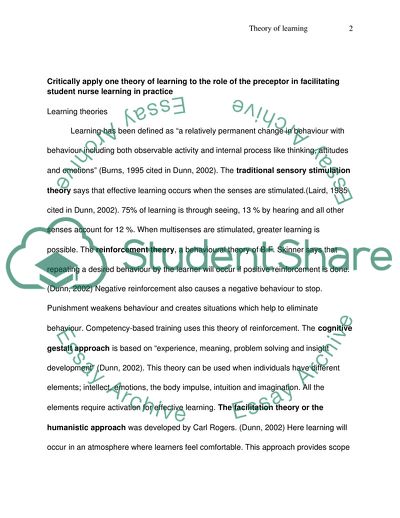Cite this document
(Theory of Learning in Nursing Article Example | Topics and Well Written Essays - 2500 words - 1, n.d.)
Theory of Learning in Nursing Article Example | Topics and Well Written Essays - 2500 words - 1. https://studentshare.org/nursing/1728555-critically-apply-one-theory-of-learning-to-the-role-of-the-perceptor-in-facilitating-student-nurse-learning-in-practice
Theory of Learning in Nursing Article Example | Topics and Well Written Essays - 2500 words - 1. https://studentshare.org/nursing/1728555-critically-apply-one-theory-of-learning-to-the-role-of-the-perceptor-in-facilitating-student-nurse-learning-in-practice
(Theory of Learning in Nursing Article Example | Topics and Well Written Essays - 2500 Words - 1)
Theory of Learning in Nursing Article Example | Topics and Well Written Essays - 2500 Words - 1. https://studentshare.org/nursing/1728555-critically-apply-one-theory-of-learning-to-the-role-of-the-perceptor-in-facilitating-student-nurse-learning-in-practice.
Theory of Learning in Nursing Article Example | Topics and Well Written Essays - 2500 Words - 1. https://studentshare.org/nursing/1728555-critically-apply-one-theory-of-learning-to-the-role-of-the-perceptor-in-facilitating-student-nurse-learning-in-practice.
“Theory of Learning in Nursing Article Example | Topics and Well Written Essays - 2500 Words - 1”. https://studentshare.org/nursing/1728555-critically-apply-one-theory-of-learning-to-the-role-of-the-perceptor-in-facilitating-student-nurse-learning-in-practice.


